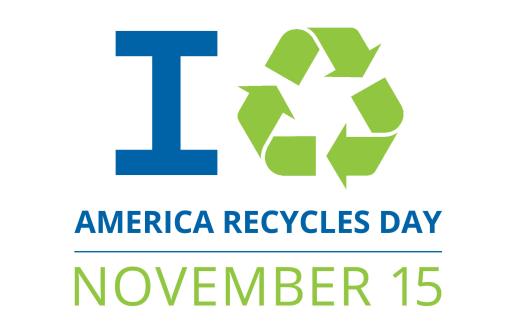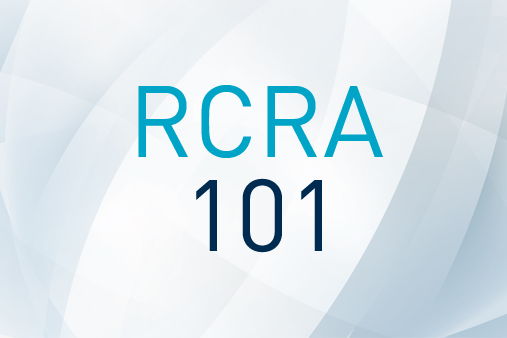Subscribe to our e-Manifest & Regulatory Newsletters
-
Nov 18 2022PFAS contamination is increasingly becoming a hot topic in the waste management industry and how to cost effectively and responsibly manage potential contamination continues to be an issue. Recently, a long term WTS client was
-
Nov 18 2022Over the past 40 years, WTS has enjoyed the privilege of discovering innovative and sustainable recycling opportunities for our clients across the United States. As more industries are adopting non-traditional outlets for everything from simple office
-
Jul 25 2022Safety Always! I had the good pleasure to spend two days in person with the majority of our WTS Environmental Managers this week. These are the folks that play a key role in supporting our
-
Jul 25 2022The Challenge: Securing an alternative to traditional disposal solution for 5,700 Liters of 20% ethanol at a WTS client site. The Process: WTS qualified, vetted and approved an ethanol recycling facility, in compliance with our
-
Jul 25 2022Our WTS environmental managers frequently encounter unknown materials in the field at customer sites, either in lab settings or hazardous waste cabinets and storage areas. Detailed below are the tests and best practices that WTS
-
Jun 27 2022WTS is pleased to present this month’s newsletter. To all of our new subscribers, welcome aboard and I trust you will enjoy the WTS experience. I am particularly pleased to begin this month’s Stakeholder message
-
Jun 08 2022Last week, personnel representing WTS, Inc. had the honor of serving as judges and presenters at the 18th International Students’ Science Fair (ISSF 2022), hosted by Lewiston-Porter Central Schools in partnership with Niagara University and
-
May 24 2022We wanted to make you aware of a couple of recent developments in the e-Manifest program. First, for New York State Generators: effective April 14, 2022 NYS based generators no longer have to submit generator manifest
-
May 23 2022Waste materials meeting the definition of solid waste, and then also meeting the definition of a hazardous waste as detailed in 40CFR §261, must undergo treatment in most cases to destroy, immobilize, or greatly reduce
-
May 23 2022To characterize and dispose of a hazardous waste, the generator of that waste must assign the proper “waste code(s)”. Waste codes communicate the properties and hazards of the waste, determine treatment requirements, and govern how
-
May 23 2022The Resource Conservation and Recovery Act (RCRA) was enacted to regulate the way wastes are managed and disposed of to protect human health and the natural environment. During the rule making process, the EPA decided
-
Apr 27 2022Once an understanding of defining Solid and Hazardous Waste’s has been obtained the next step of properly managing waste is to characterize the waste and determine if it is in – fact a hazardous waste. This
-
Nov 18 2022PFAS contamination is increasingly becoming a hot topic in the waste management industry and how to cost effectively and responsibly manage potential contamination continues to be an issue. Recently, a long term WTS client was
-
Nov 18 2022Over the past 40 years, WTS has enjoyed the privilege of discovering innovative and sustainable recycling opportunities for our clients across the United States. As more industries are adopting non-traditional outlets for everything from simple office
-
Jul 25 2022Safety Always! I had the good pleasure to spend two days in person with the majority of our WTS Environmental Managers this week. These are the folks that play a key role in supporting our
-
Jul 25 2022The Challenge: Securing an alternative to traditional disposal solution for 5,700 Liters of 20% ethanol at a WTS client site. The Process: WTS qualified, vetted and approved an ethanol recycling facility, in compliance with our
-
Jul 25 2022Our WTS environmental managers frequently encounter unknown materials in the field at customer sites, either in lab settings or hazardous waste cabinets and storage areas. Detailed below are the tests and best practices that WTS
-
Jun 27 2022WTS is pleased to present this month’s newsletter. To all of our new subscribers, welcome aboard and I trust you will enjoy the WTS experience. I am particularly pleased to begin this month’s Stakeholder message
-
Jun 08 2022Last week, personnel representing WTS, Inc. had the honor of serving as judges and presenters at the 18th International Students’ Science Fair (ISSF 2022), hosted by Lewiston-Porter Central Schools in partnership with Niagara University and
-
May 24 2022We wanted to make you aware of a couple of recent developments in the e-Manifest program. First, for New York State Generators: effective April 14, 2022 NYS based generators no longer have to submit generator manifest
-
May 23 2022Waste materials meeting the definition of solid waste, and then also meeting the definition of a hazardous waste as detailed in 40CFR §261, must undergo treatment in most cases to destroy, immobilize, or greatly reduce
-
May 23 2022To characterize and dispose of a hazardous waste, the generator of that waste must assign the proper “waste code(s)”. Waste codes communicate the properties and hazards of the waste, determine treatment requirements, and govern how
-
May 23 2022The Resource Conservation and Recovery Act (RCRA) was enacted to regulate the way wastes are managed and disposed of to protect human health and the natural environment. During the rule making process, the EPA decided
-
Apr 27 2022Once an understanding of defining Solid and Hazardous Waste’s has been obtained the next step of properly managing waste is to characterize the waste and determine if it is in – fact a hazardous waste. This







